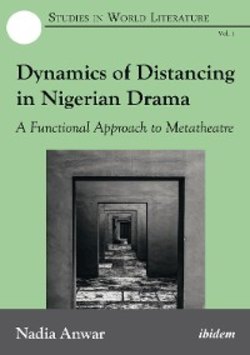Читать книгу Dynamics of Distancing in Nigerian Drama - Nadia Anwar - Страница 9
1.2 Thomas J. Scheff and Optimum Distancing
ОглавлениеIn order to cover the emotional aspects of Nigerian drama, the notion of balanced distance introduced by American social psychologist, Thomas J. Scheff, is very relevant. Scheff (2001) believes that aesthetic distance can be achieved through the creation of a space where the audience can socially relate to the happenings on the stage while maintaining an aesthetic absorption and critical outlook. He further argues that this state can only be achieved by optimizing the under- and over-distanced situations. Scheff considers distancing of emotion as vital to the process of catharsis. He defines it “as the ratio of observation of, to participation in, one's emotions” (1981, n.p). According to his model, neither under-distanced nor over-distanced situations allow an audience to reflect on their experience of drama in a balanced manner, as the former can result in intolerable fear and the latter may fail to generate any emotions at all. In between these two extremes lies his concept of aesthetic distancing, through which, while remaining aloof as observers, an audience can participate in the emotional environment of the stage, experiencing repressed feelings and discharging them as well. Whereas Freud and Breur (1895) call this process abreaction, because it brings about a therapeutic change in any individual or a group of people, in dramatic terms it is famously known as catharsis. At an aesthetic distance, “the individual achieves a balanced relationship to the past; that is he both remembers and relives past experiences”, in other words, s/he acquires the roles of both a “cognitive observer” and an “affective actor”, the confluence of which engenders a “psychic tension”, released through catharsis of emotions followed by “a gentle moment of recognition” (Landy 1994, 112–14). Consequently, optimum and aesthetic distance in the theatre involving emotions such as fear, anger, grief and shame, which are commonly disturbing can possibly enhance the interest of the audience as well as provide pleasure (Scheff 2007, 107).
Scheff links his concept of distancing to role-taking—that is, the degree of an audience’s emotional reaction to and understanding of the play. In Osofisan’s The Chattering and the Song, this role-taking may offer a kind of constant challenge to an audience because of the multiplicity of performative illusions created through the play-within-the-play technique. In his discussion of Shakespeare’s comedies and romances, Bertrand Evans argues for the significance of “awareness control” in which audience awareness is moved “back and forth between the awareness of characters in the drama and their own point of view” (Evans quoted in Scheff 2007, 108). In this context, the levels of distance coexist with and are in direct proportion to the alterable states of individual consciousness. Scheff associates this kind of alternation with the feeling of control from which one can “pendulate” out if it gets intense (109). In other words, distance reconciles the differences between “idealistic” and “realistic” situations (Bullough 1912, 107), thus creating a liminal space where two extremes are married.
Scheff makes a clear distinction between three types of drama: the first aims to touch the intellectual dimensions of the human mind, what he calls the “drama of ideas” such as we find in Shaw; the second demands “an intense emotional reaction” from the audience as we find in Seneca’s plays, and the third offers a balance between thoughts and feelings and is “orientated towards catharsis” (2001, 152–53). According to Scheff, most of the classical dramas of Sophocles and Shakespeare and modern plays by Ibsen and Wilde exemplify this third type. In order to fill the lacuna created by the absence of studies on emotions in the social sciences, Scheff took a step towards integrating the socio-cultural and psychological aspects of emotions and their potential catharsis and their subsequent effects on real life, the neurological and theatrical contexts. Drawing from Aristotelian terminology, Scheff ascribes the meaning of ‘terror’ to fear and ‘pity’ to ‘empathic identification’ with one or more of the characters in drama which leads to catharsis. He believes that in both drama and psychotherapy an audience re-experiences an emotional crisis “in a context of complete security” (Scheff 2007, 100), which in the case of drama is theatre. He rationalizes his argument by associating a cathartic experience with Wordsworthian emotions which are “recollected in tranquillity” and offer endless possibilities to the poet. In the context of the audiences of Nigerian drama, this kind of cathartic experience parallels aesthetic distancing which is characterized by “emotional expression that is clarifying and relieving, rather than obscuring and overwhelming, and that invites an engagement of the rational, reflective capacities” (Landy 2001, 58).
